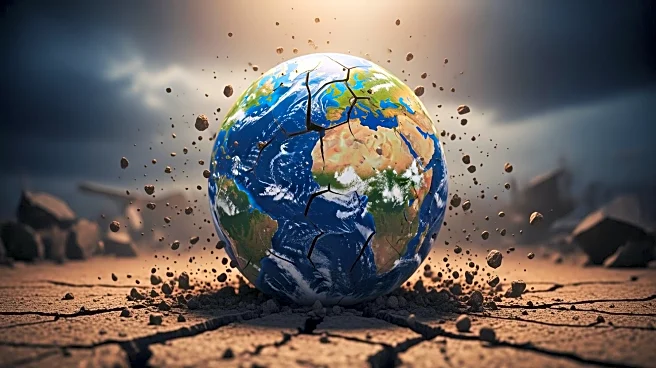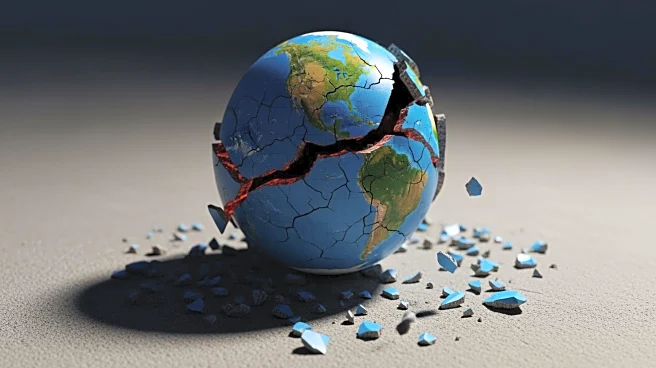What's Happening?
A powerful 8.8-magnitude earthquake struck off the coast of Russia's Kamchatka Peninsula on July 30, 2025. The quake, which occurred at a depth of about 21 kilometers, led to a tsunami that affected the region
and sent high waves across the Pacific Ocean, reaching as far as Japan, Hawaii, and California. Despite the magnitude, the impact on the local population was minimal, with only a few injuries reported. Regional authorities had prepared for such an event and quickly implemented safety measures, including a state of emergency in some areas. The Kamchatka Peninsula, known for its volcanic activity, was largely spared from significant damage due to its geographical features and preparedness.
Why It's Important?
The earthquake's occurrence highlights the seismic vulnerability of the Pacific Ring of Fire, where tectonic activity is frequent. The event underscores the importance of disaster preparedness and the effectiveness of early warning systems in mitigating potential damage and loss of life. The minimal impact on the Kamchatka region demonstrates the benefits of proactive safety measures and infrastructure designed to withstand seismic events. This earthquake also serves as a reminder of the interconnectedness of global seismic activity, as its effects were felt across the Pacific, impacting international communities and economies.
What's Next?
Authorities will continue to monitor aftershocks and assess any potential damage to critical infrastructure, including the nuclear submarine base in Vilyuchinsk. The event may prompt further investment in seismic research and disaster preparedness in the region. Additionally, international cooperation in monitoring and responding to seismic events may be strengthened to ensure rapid response and information sharing in future incidents.
Beyond the Headlines
The earthquake raises questions about the resilience of military installations in seismically active regions, particularly the Vilyuchinsk base, which houses nuclear submarines. While no damage was reported, the event highlights the strategic importance of ensuring the safety and security of such facilities. Furthermore, the quake may influence future urban planning and development in the region, emphasizing the need for earthquake-resistant infrastructure.












